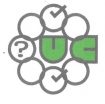I have been warned; trying to help people become better diagnosticians may be a fool’s errand. The primary expertise of a physician, after all, resides in their ability to diagnose a malady that causes your complaints. I claim, and my first book directly addresses, that the best decision maker for treatments is you; you are the only one who faces the consequences of your choice. But, treatments are chosen once the diagnosis is made. What about making the diagnosis in the first place?
Patients are, in my experience, more often seeking to make their own diagnoses. They query Google, WebMD, and other sources for information about tests. “Dr Google” might be the busiest of all medical “purveyors”. The reason people are seeking diagnosis and test information, I believe, is that they are being asked to undergo tests that cost them a lot of money, time and effort, and, in parallel, they are unsure how to judge the value of the diagnostic test onslaught. Judging how much benefit a test, or series of tests, offers is the step to know if you both need and want the test in the first place.
I believe that in order to attain your best care, you must participate in your diagnostic workup and subsequent plans for treatment. Many of you are seeking medical information from sources other than your physician. I saw an advertisement on TV (can’t confirm the truth of the statement, however) that some people use the Internet over fifty hours for every one-hour they spend with a physician. Information about diagnostic tests and treatments is propagating and you are finding it.
A Pew Research Center survey supports my claim; the survey found, in part:
-
Thirty-five percent of adults say that at one time or another they have gone online specifically to try to figure out what medical condition they or someone else might have. These people have been labeled, “diagnosers”.
-
When asked if the information found online leads them to think they need the attention of a medical professional, 46 percent said, yes.
-
Forty-one percent of online “diagnosers” said a medical professional confirmed their diagnosis. An additional two percent say a medical professional partially confirmed it.
-
Thirty-five percent say they did not visit a physician to get a professional opinion after their searching.
-
Eighteen percent say they consulted a medical professional and the clinician either did not agree or offered a different opinion about the condition.

